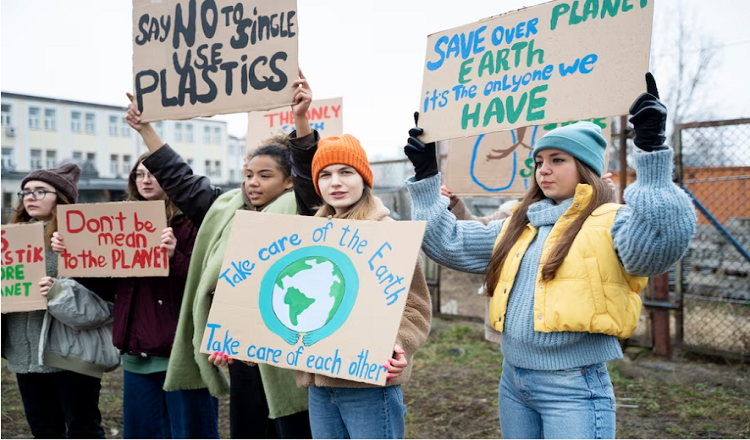The State of Climate Change in the US Examining Key Indicators and the Impact of Climate Change on the Environment
It’s easy to understand why the urgency of the topic of climate change has increased recently. The effects of climate change on the environment and human culture are becoming more and more obvious, from rising sea levels to more frequent and severe natural disasters. Given that the United States is one of the top producers of greenhouse gases and is already feeling the effects of climate change, this issue is especially urgent there.
Because of this, this essay will go in-depth on the condition of climate change in the US. Our objective is to look at significant indicators and shed light on how climate change is affecting the environment. We’ll cover a wide range of sub-topics to give a thorough overview of the current condition of climate change in the US, from temperature and precipitation patterns to the impact on wildlife and human health. We hope this post will offer insightful perspectives and motivate action, whether you’re a climate change skeptic or a concerned citizen eager to learn more about this pressing problem. Therefore, let’s analyze the situation of climate change in the US while sitting down.
Overview of US Climate Change
The environment and economy of the US are already being significantly impacted by climate change. Since the turn of the 20th century, average temperatures have risen by around 1.8°F, and extreme weather events including heat waves, storms, floods, and droughts have become more often and more intense. The distribution of precipitation is changing, with some regions seeing more frequent and severe rainfall events and others going through protracted droughts.
Additionally, coastal erosion and flooding are being exacerbated by sea level rise, endangering the livelihoods of millions of people who live in coastal areas. Data from numerous sources, including NOAA, NASA, and the US Global Change Research Program, are used to support these patterns. To lessen the effects of climate change and cut greenhouse gas emissions, the US must act quickly.
Important Climate Change Indicators in the US
There are a number of crucial climate change indicators in the US that shed light on the severity of the issue and the pressing need for action. The main cause of climate change is greenhouse gas emissions, particularly carbon dioxide emissions, and the US is one of the largest emitters globally, contributing 15% of all emissions. Emissions are also significantly influenced by energy use, with the US consuming the most energy per person worldwide.
Another significant source of emissions is deforestation, which largely occurs in the Amazon rainforest. Data from organizations like the World Resources Institute and the US Environmental Protection Agency are used to support these measures. The US must move quickly to cut emissions and make the transition to a low-carbon economy in order to combat climate change.
Climate Change’s Effects on the Environment
In the US, climate change is having a huge negative influence on the ecosystem, with serious repercussions for wildlife, forests, oceans, and air quality. Changing precipitation patterns and warming temperatures are modifying ecosystems and delaying seasonal events like bird migrations and flower blooms. As ocean temperatures and acidity levels rise and endanger the survival of many marine species, forests are also seeing more frequent and severe wildfires.
People and animals alike are suffering from respiratory issues as a result of the poor air quality brought on by elevated temperatures and haze. Data from organizations like the National Wildlife Federation and the US Global Change Research Program support these effects. To lessen these effects and safeguard both human and environmental health and wellbeing, immediate action is required.
Climate Change’s Effects on Human Health
In the US, rising temperatures and altered precipitation patterns are having a significant influence on human health, increasing the risk of respiratory diseases brought on by air pollution and heat-related disorders. Heat exhaustion, dehydration, and other heat-related disorders are on the rise as a result of the increased frequency and intensity of extreme heat waves. Respiratory conditions like asthma and chronic obstructive pulmonary disease are being made worse by the poor air quality that is being brought on by rising temperatures and smog.
Additionally, as their habitats grow, disease-carrying insects like ticks and mosquitoes are spreading more widely. Data from organizations like the National Institutes of Health and the Centers for Disease Control and Prevention provide evidence for these effects. To lessen the effects of climate change on human health and reduce greenhouse gas emissions, immediate action must be made.
Climate Change Initiatives in the US
In recent years, the US has made more progress in combating climate change. With an aim of achieving net-zero emissions by 2050, the Biden administration has established challenging targets for reducing greenhouse gas emissions. The Clean Energy Plan, which aims to lower emissions from the electricity sector by supporting renewable energy sources, is one of many policy efforts that have been implemented to help reach this goal.
To cut emissions in transportation and industry, technological developments including carbon capture, utilization, and storage (CCUS) technology are also being developed. Additionally, the use of renewable energy sources like solar and wind power is rising, with the total amount of electricity generated from these sources expected to reach 20% in 2020. In order to combat climate change and build a sustainable future, these initiatives are essential.
Conclusion
As a result of rising temperatures, altered precipitation patterns, and an increase in the frequency and severity of extreme weather events, the situation of climate change in the US is frightening. These alterations are seriously affecting the environment, animals, and public health, which makes it obvious that immediate action is required to solve this pressing problem. Recognizing that climate change is a global issue that calls for a team effort to solve is crucial. The US has a big part to play in solving this problem because it is one of the biggest producers of greenhouse gases in the world.
The development of sustainable practices, the promotion of renewable energy sources, and the reduction of greenhouse gas emissions should all be given top priority. Additionally, encouraging a culture of environmental responsibility and encouraging people to adjust their lifestyles to lessen their carbon footprint can be accomplished by educating and raising awareness among the general population. If we don’t take immediate action, the effects of climate change will only worsen, causing irreparable harm to the environment and our way of life. It’s critical that we address this issue head-on and collaborate to create a sustainable future for our children and their children.
Read More You May Like:














Post Comment